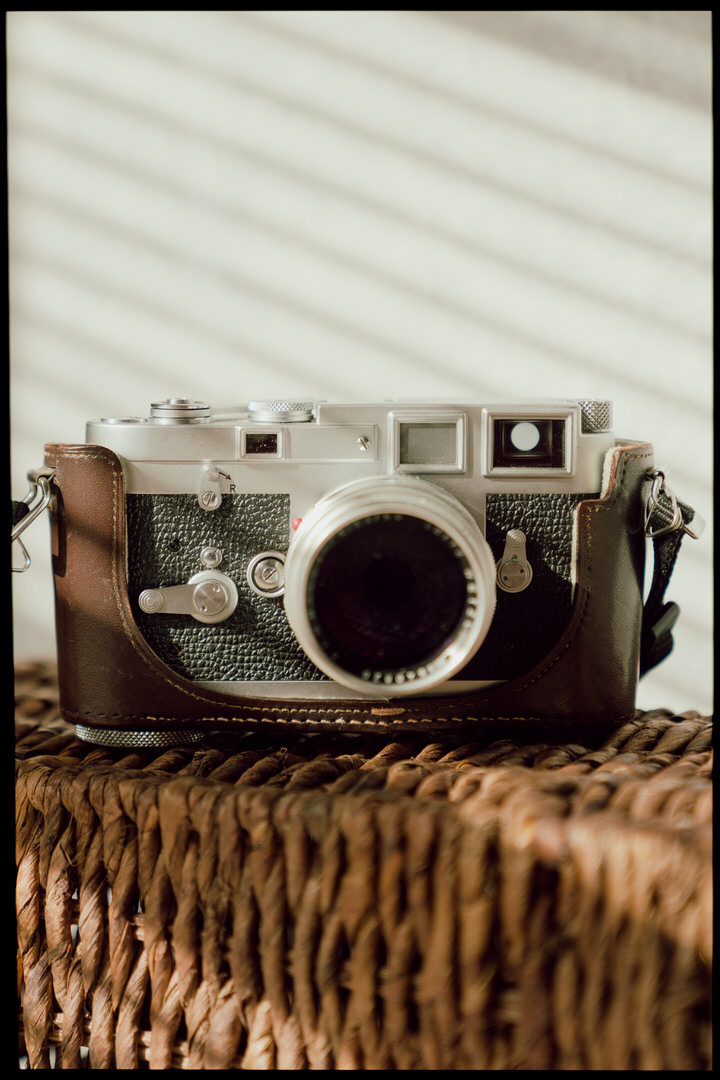If you’ve booked a film add-on for your wedding with Alesia Films, first of all, YES. You’re in for something special. Choosing film for your wedding means embracing intentionality, nostalgia, and texture. But now comes the fun part: selecting which type of film aesthetic speaks to you. So, let’s talk 35mm vs 120 film: what’s the difference, and which one is right for your day?
This guide breaks down the key differences between film formats, introduces you to the vintage cameras I shoot with, and also gives you a peek into the film stocks I offer. Whether you’re into dreamy portraits or flash-filled party shots, you’ll walk away ready to curate your own one-of-a-kind custom film experience.
Already excited? Check out my film work here.
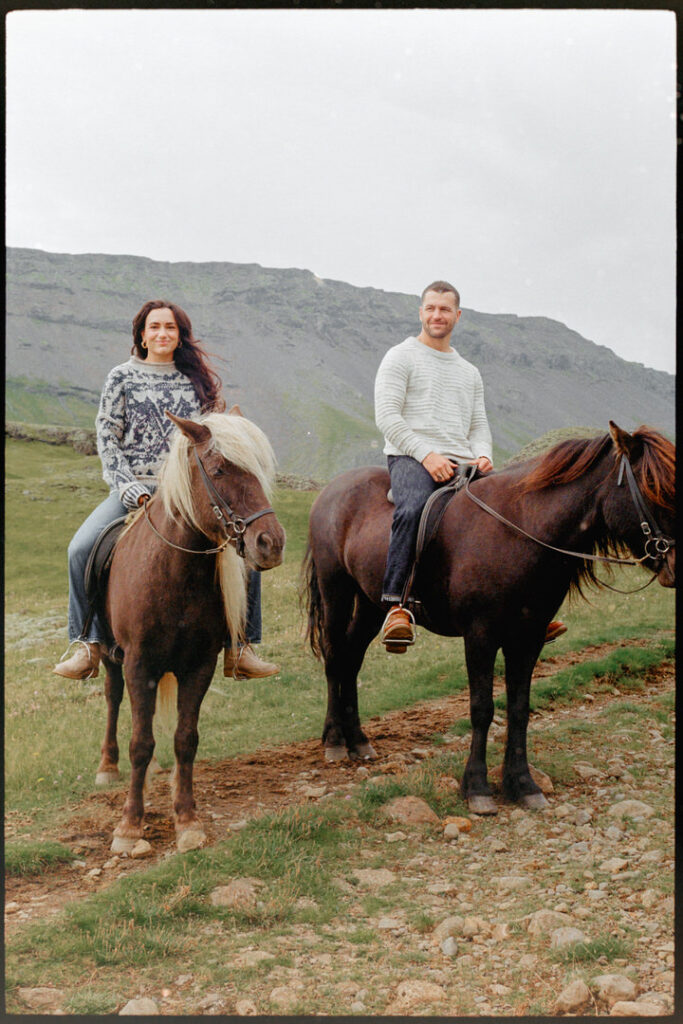
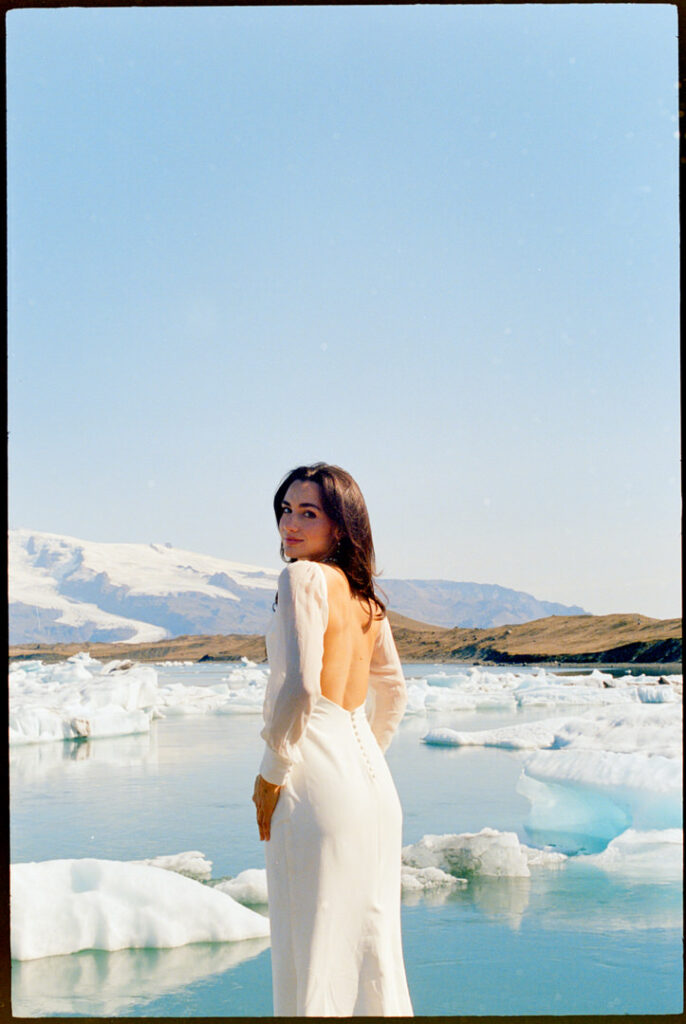
35mm vs 120 film: What’s the Difference?
Let’s start with the basics. 35mm film and 120 film (also known as medium format) are two of the most popular film formats used by modern-day wedding and elopement photographers. The key difference lies in the size of the film and how many exposures (a.k.a. photos) you get per roll.
35mm film offers about 36 exposures per roll. It has a slightly grainier, higher contrast feel, which makes it perfectly suited to a nostalgic, documentary style. If you’re someone who wants lots of candid moments captured without pausing the action, then this format might be your perfect balance of spontaneity and soul.
120 film, on the other hand, gives only 12-15 exposures per roll, depending on the camera. But the trade-off? Sharper detail, less grain, and a softer tone. It’s a slower, more deliberate approach to photography, ideal for couples who love a refined, fine art aesthetic.
“The Film Experience” Zoom Call
We will either hop on an early mid-engagement (preferably 3-5 months prior to your wedding) film experience zoom call or add it to our time on our final zoom call, whatever works best for all of our schedules.
On this call, you will share which cameras are your favorite and why. This will help us shape the story of your day and how we will use these cameras intentionally on the day-of. So be sure to take your time reading through this guide and imagining your portraits, details and venue captured with each camera!
This is also a great opportunity for all of us to touch point with each other mid-engagement and answer any questions that have come up!
35mm Film Cameras I Use (and When I Use Them)
Without further ado, let’s jump into my camera collection! Starting with the 35mm cameras, I have 3 options to choose from — all with their own unique characteristics.

Leica M3
This fully manual camera has no flash and thrives in natural light. If you’re getting married outdoors in sunny or shaded areas and want bright, vibrant portraits, this one’s for you. It captures clear images with stunning color and detail. All in all, a classic choice with serious elegance for portrait time.
Type of shooting: Slow and Intentional
Flash: No
Photos per roll: 36
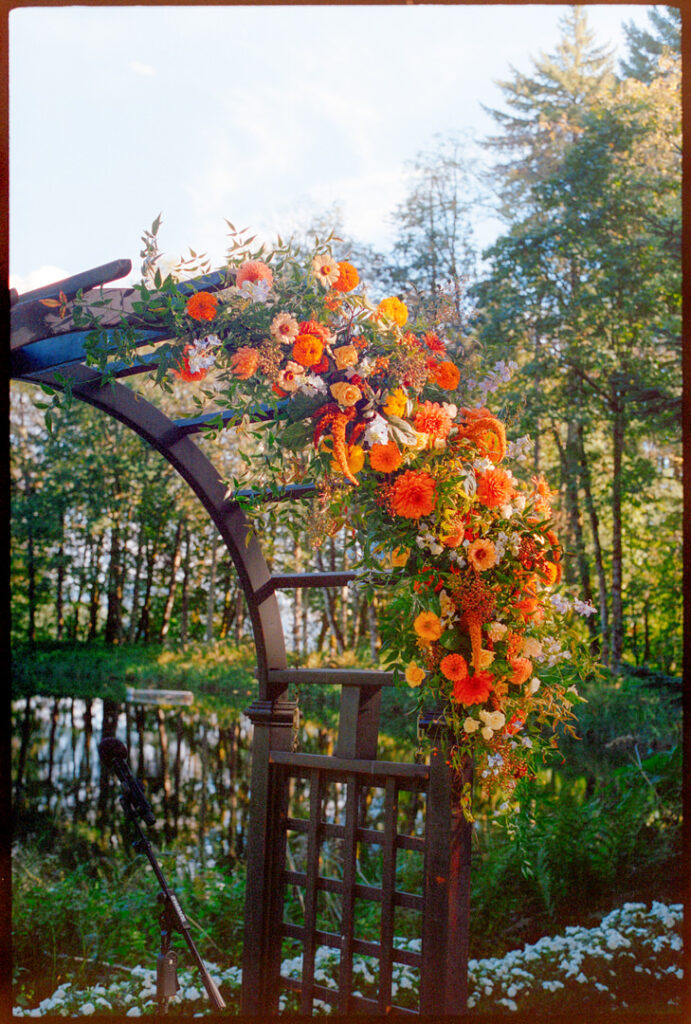
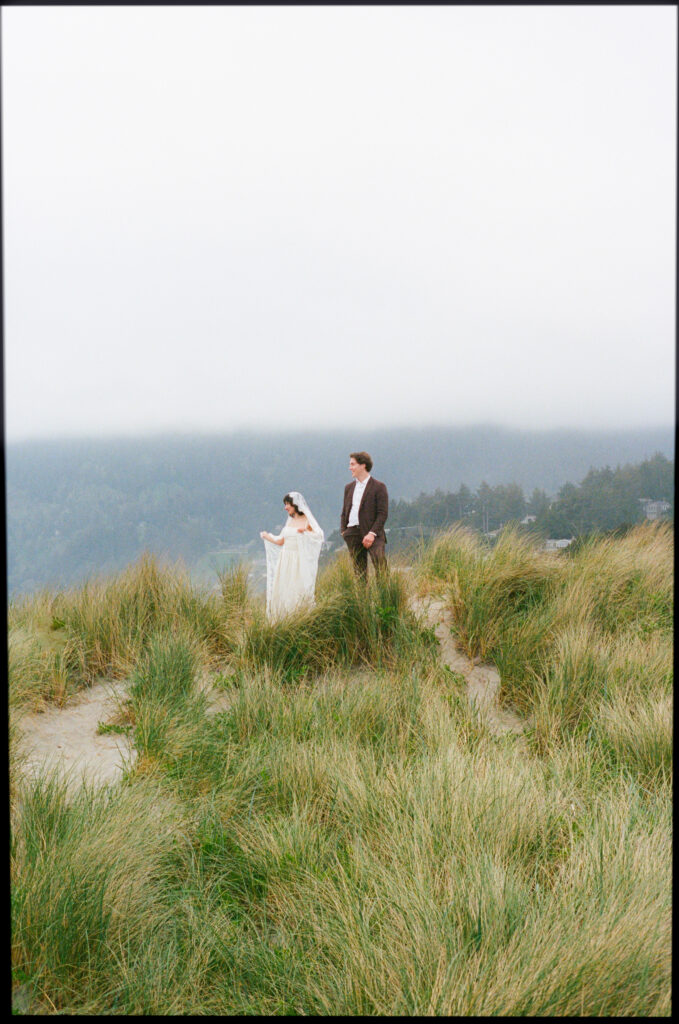

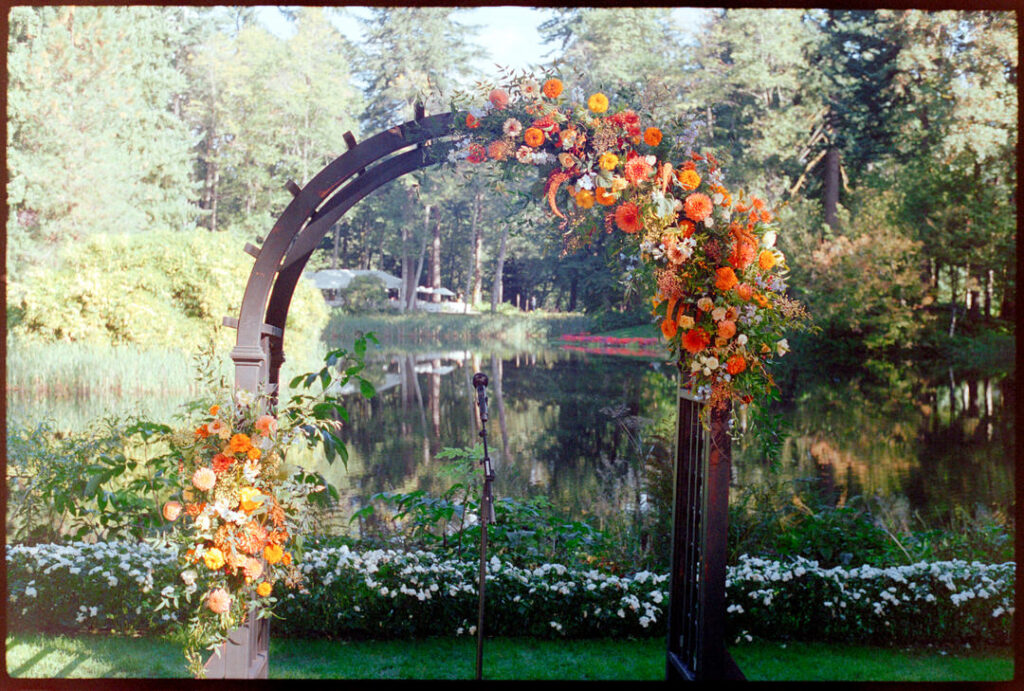
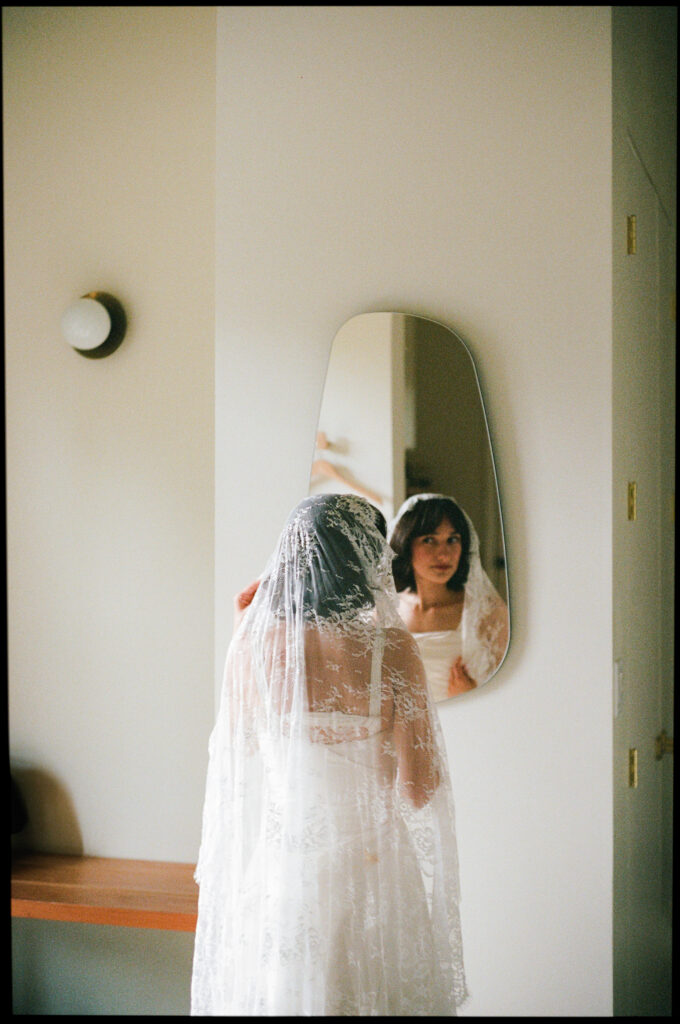





Minolta x700
This is my OG film camera, the one that started it all for me! Because it has a detachable lens, i’ve curated a collection of lenses for this camera: a 24mm, 50mm and 200mm. With manual focus and auto exposure, it lets me adapt quickly to changing light while keeping sharp results that still feel grainy and punchy like classic 35mm. With my additional flash attachment, this makes it the most versatile camera in my entire lineup.
Type of shooting: Fast paced
Flash: Yes
Photos per roll: 36
50mm Lens
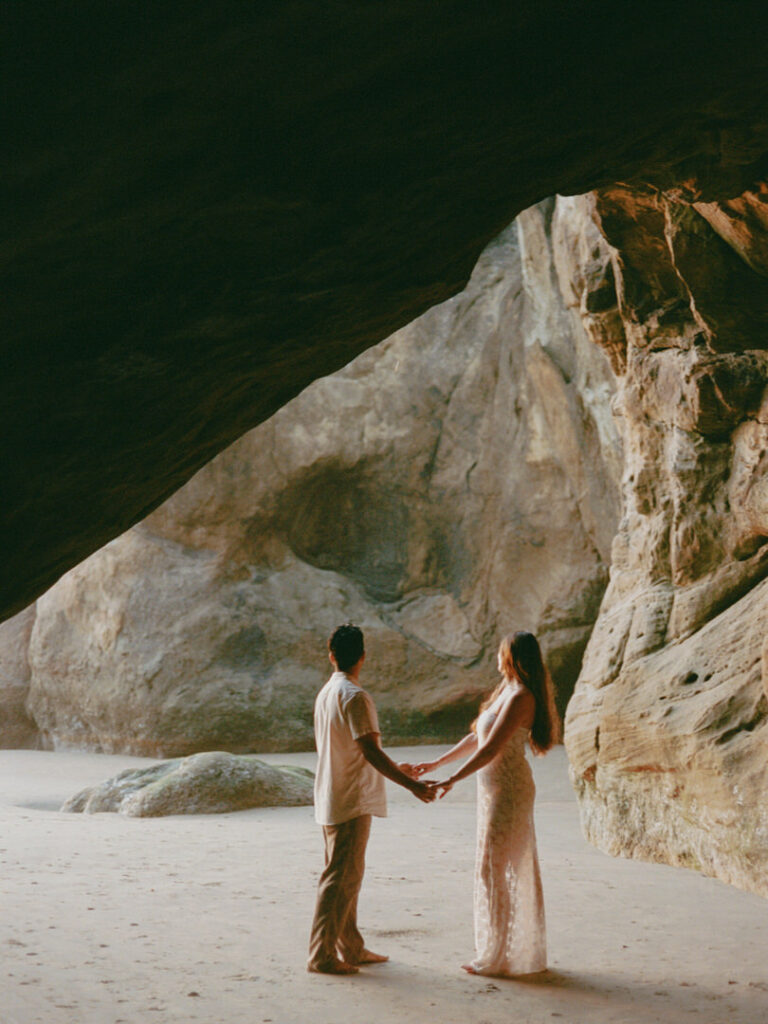
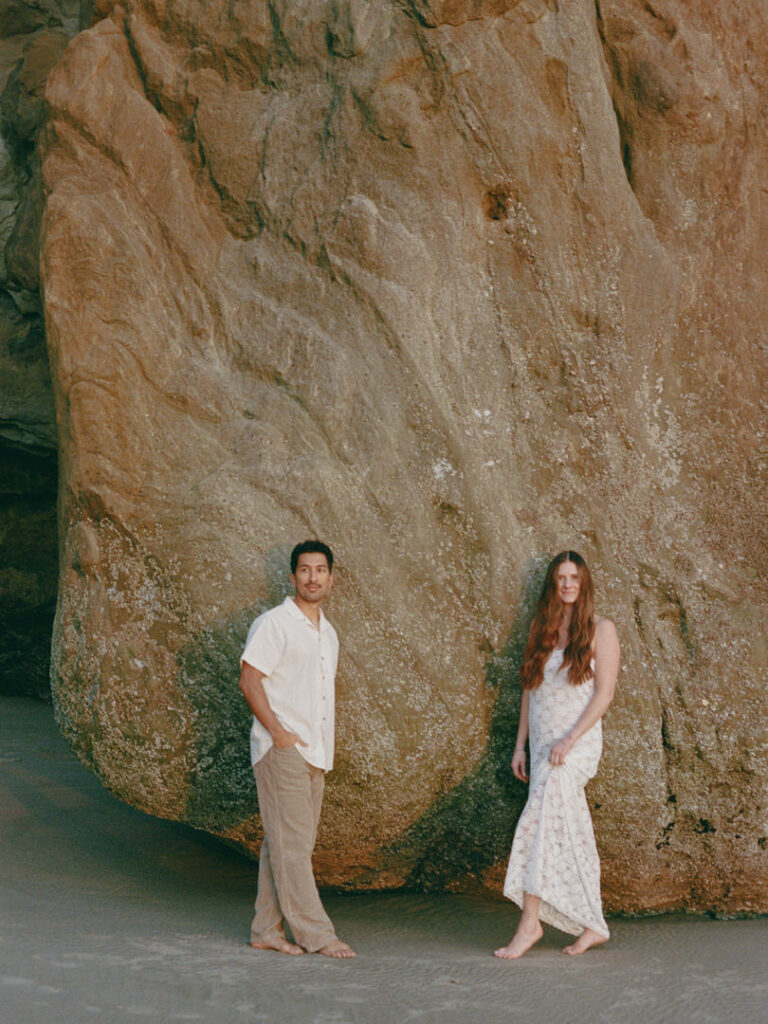
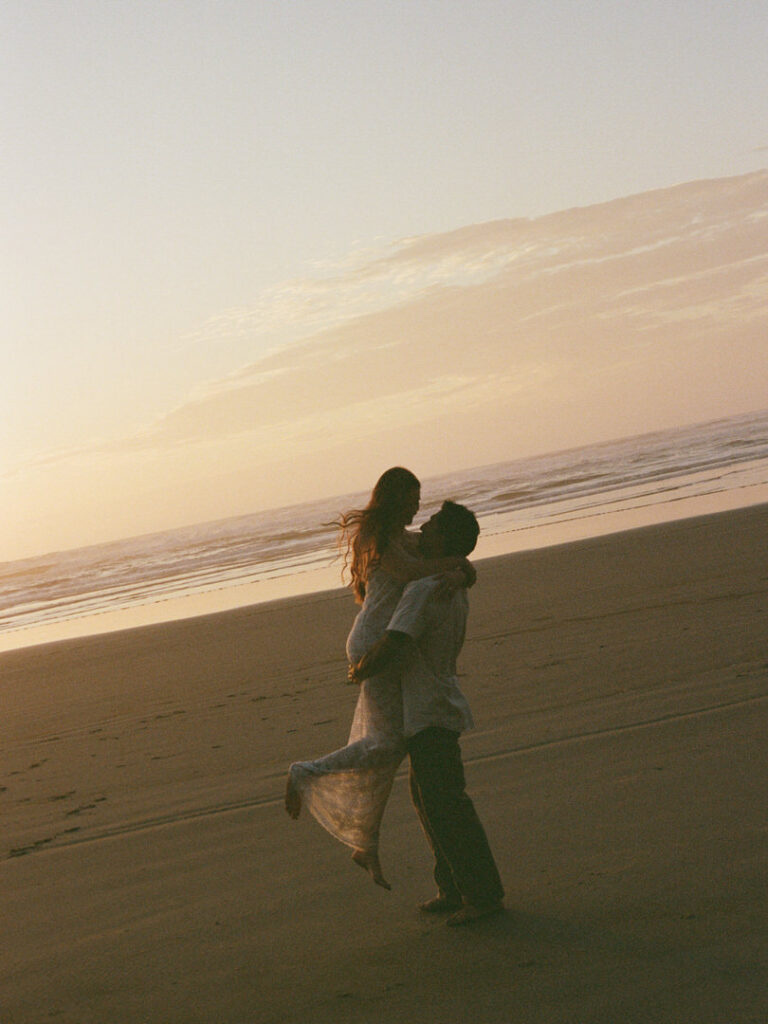
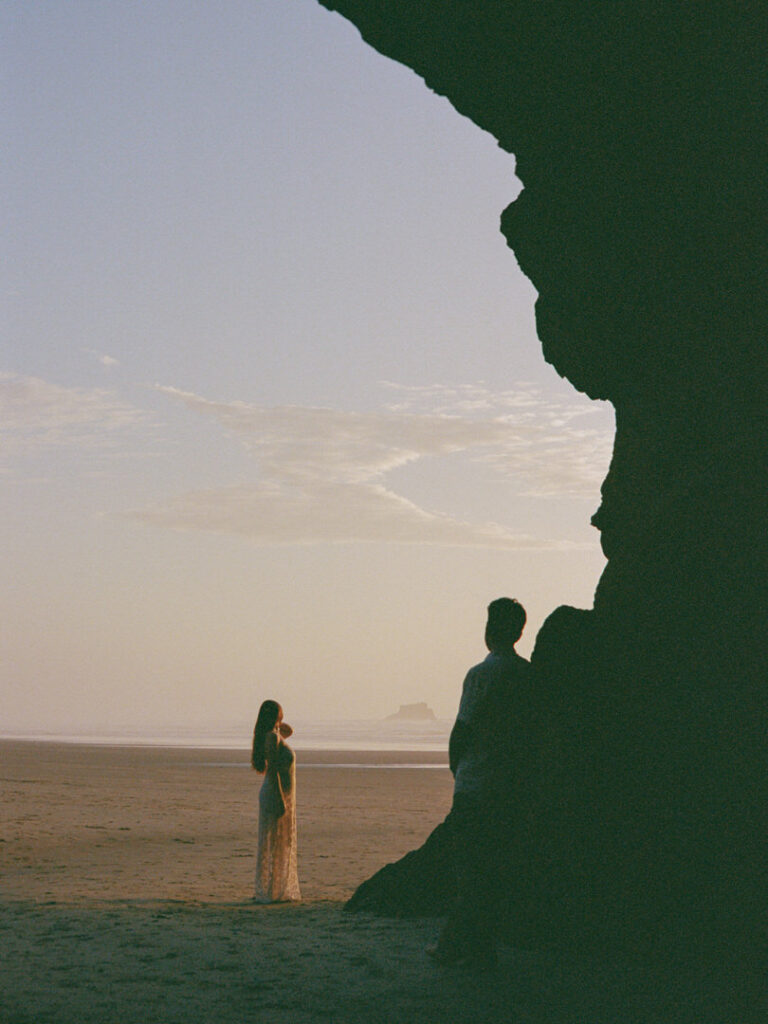
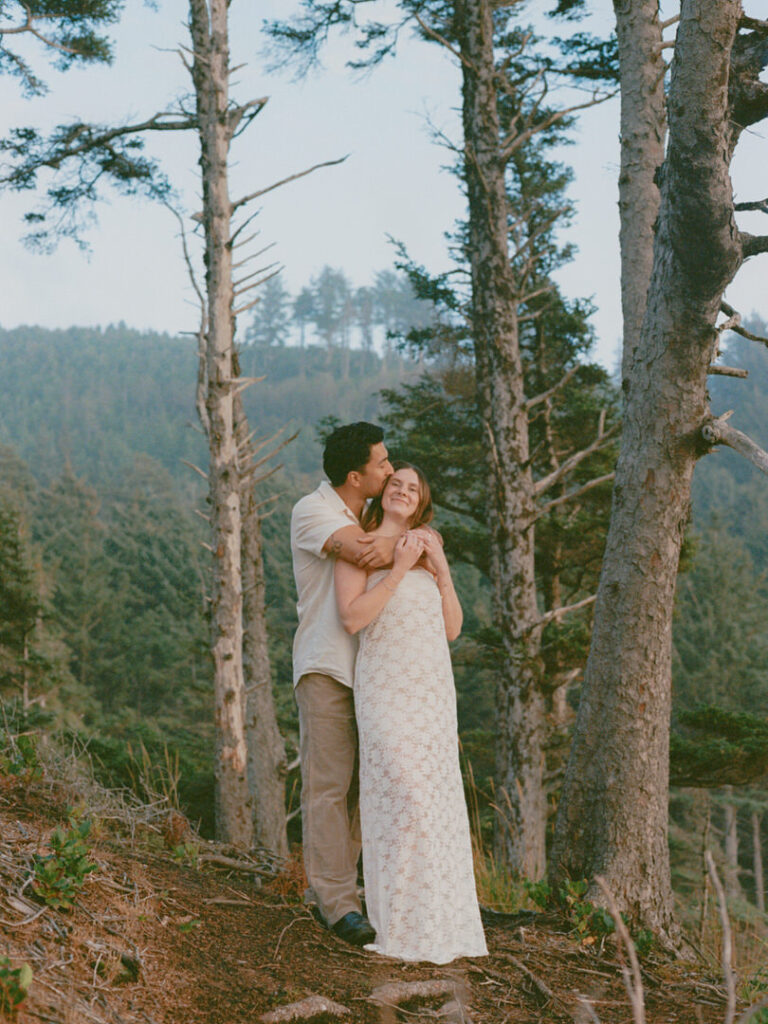

Olympus Epic Zoom 80 | Wide Deluxe
This point-and-shoot camera with built-in flash gives you that nostalgic ‘90s look: high contrast and casual, candid energy. It’s the one I’ll pull out when I want to capture your guests at cocktail hour, on the dance floor or those playful in-between moments. It’s the life of the party.
Type of shooting: Candid moments in fast paced environments
Flash: Yes
Photos per roll: 36




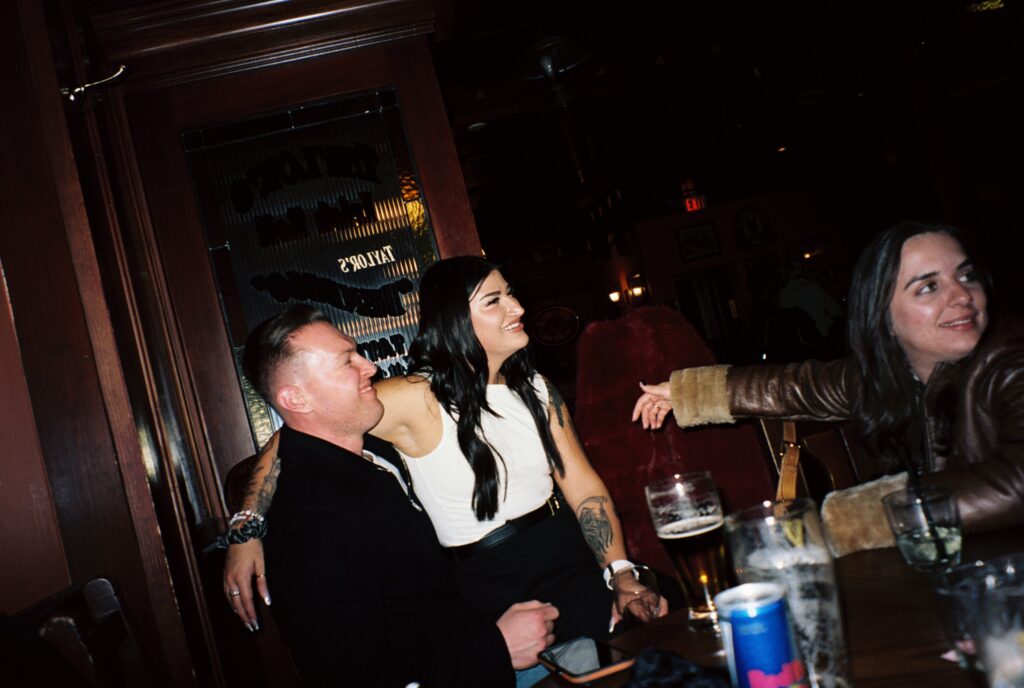
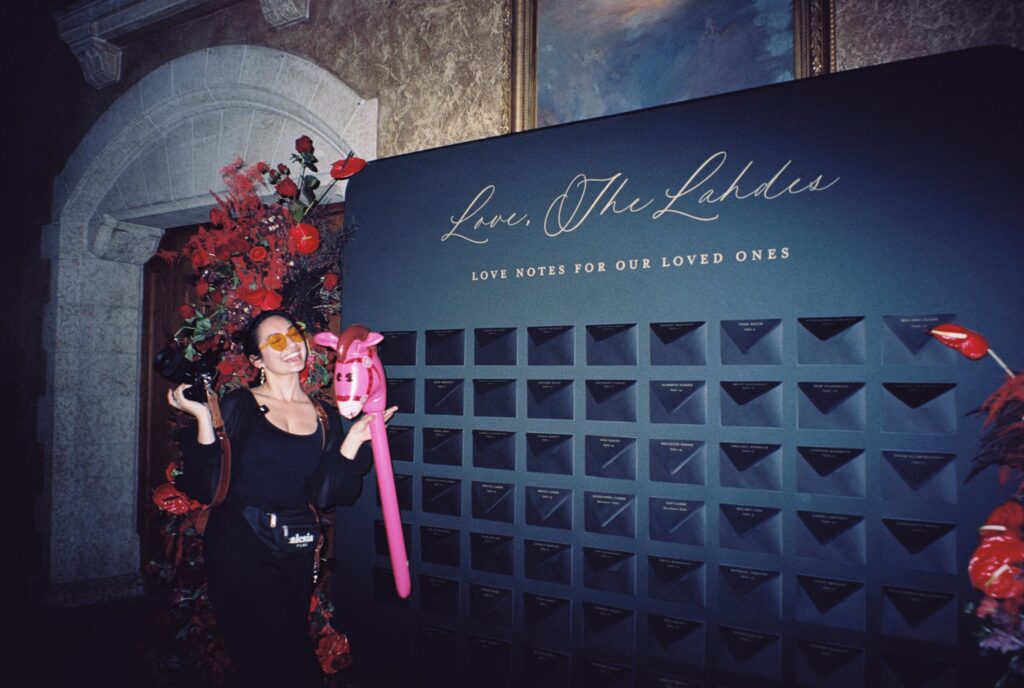
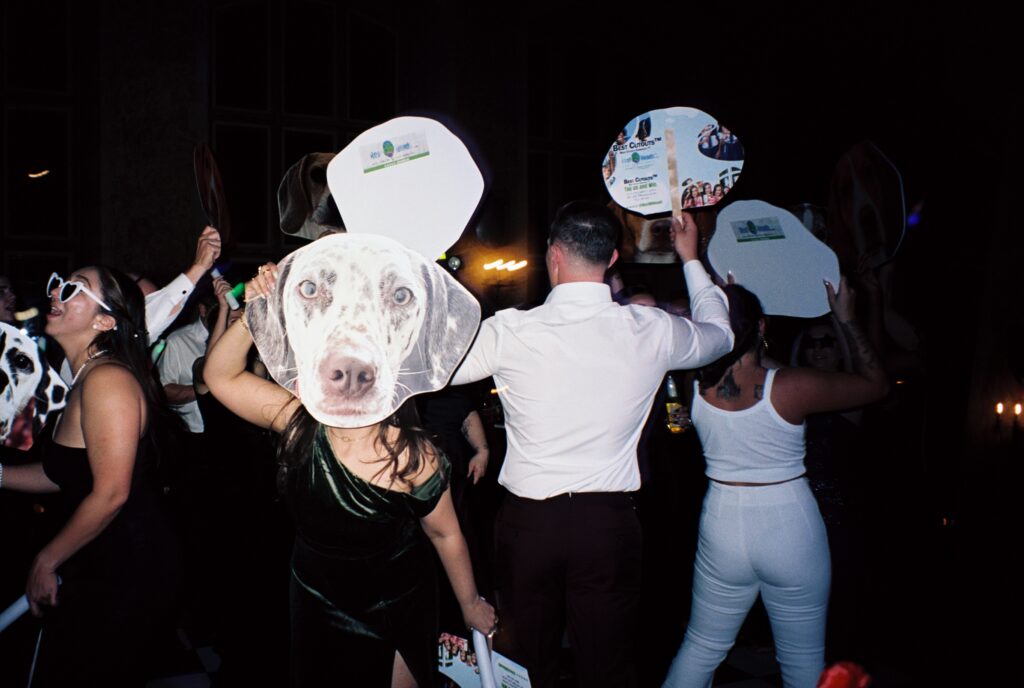
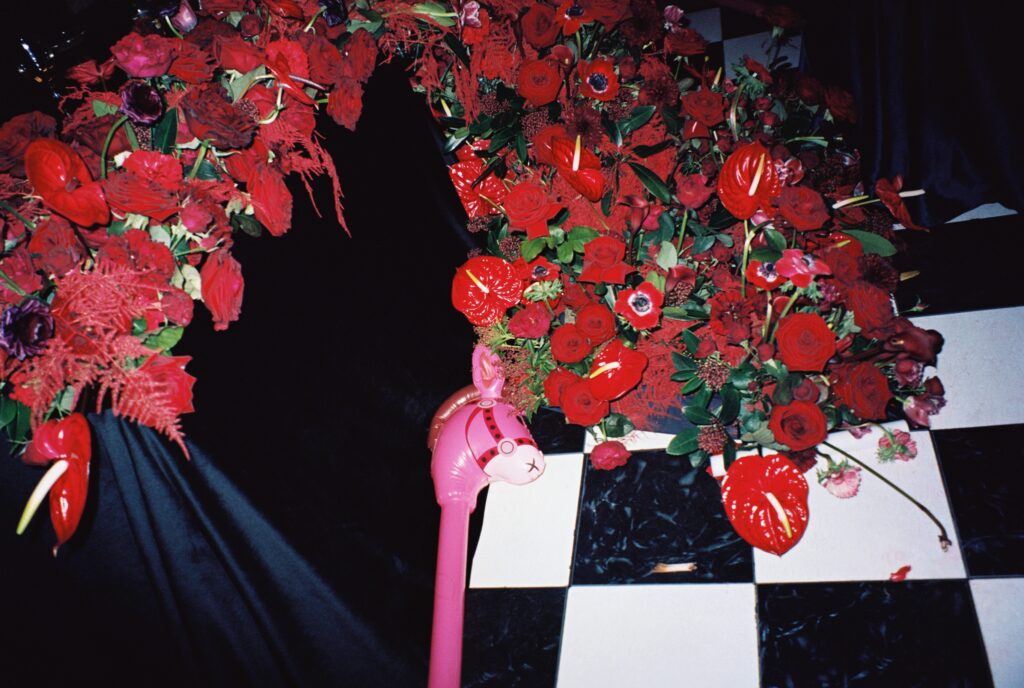
120 Medium Format Cameras I Use (and Why I Love Them)
Shooting medium format film is a slower, more intimate process, but the results are worth it. Think soft, romantic tones and painterly depth. Here are the cameras in my 120 lineup:

Holga 120
This quirky plastic toy camera offers blurred edges, double exposures, and a flash hot shoe. Very trendy and popular! It delivers the most nostalgic look of any medium format camera I use: my favorite moments being wedding party portraits and candids at dinner.
Type of Shooting: Medium Paced and Intentional
Flash: Yes
Photos per roll: 12

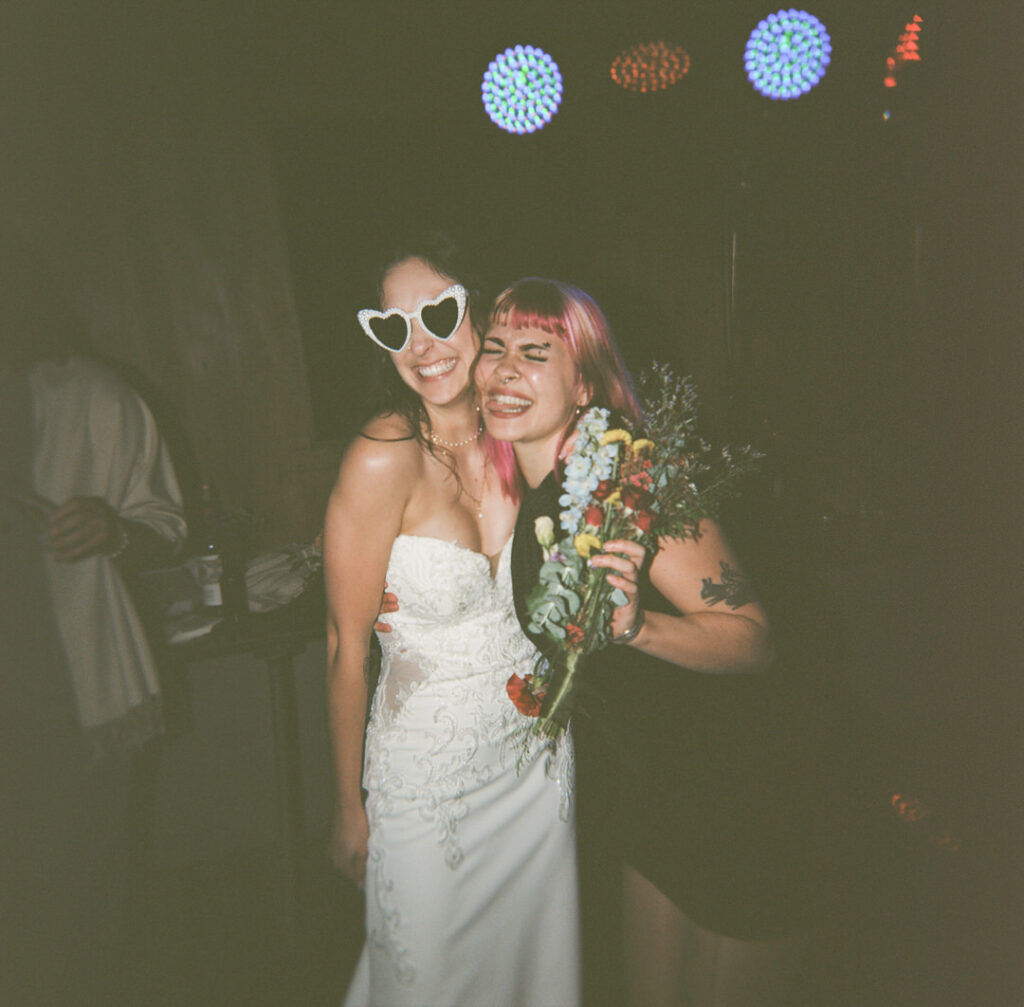





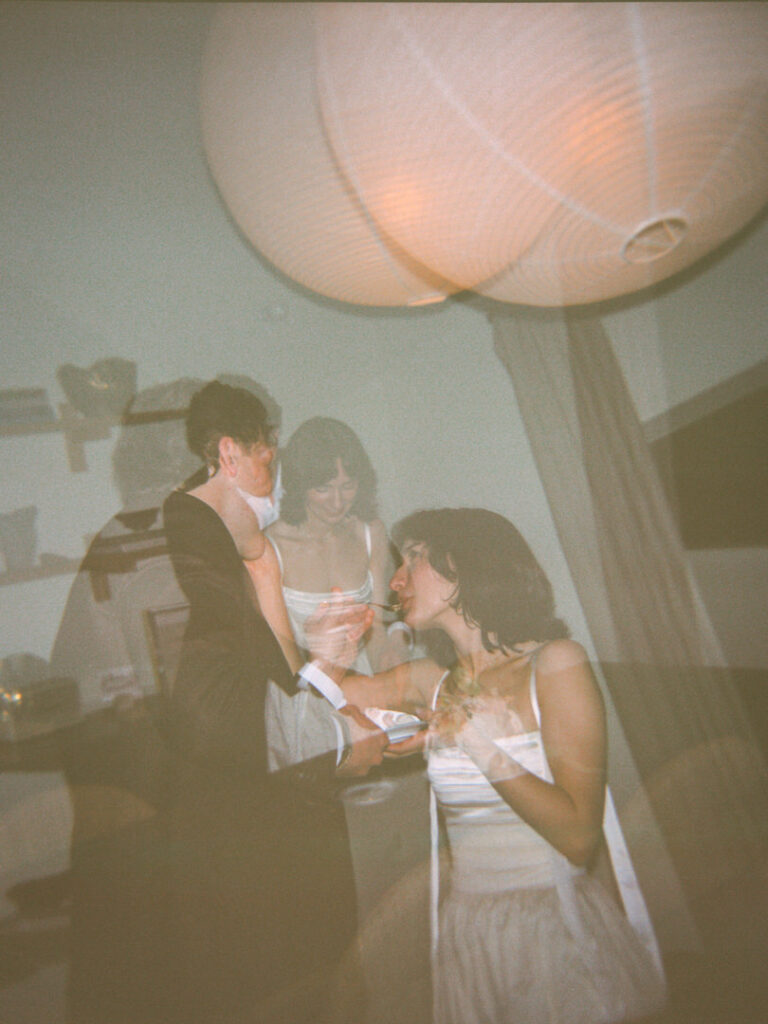


Fuji GA645
All automatic with flash, the Fuji645 produces rich color and incredible image quality. I love to bring it out for direct sunlight portraits and use the built-in flash for the dance floor!
Type of Shooting: Fast Paced
Flash: Yes
Photos per roll: 15







Rolleiflex 3.5
This high-end manual camera is beloved by film photographers for its vintage build and sharp optics. With no flash and a waist-level viewfinder, it encourages a slow pace and unique compositions. So, this camera is great for scenic portraits or intimate moments.
Type of Shooting: Slow and Intentional
Flash: No
Photos per roll: 12









35mm vs 120 film Guide: Color Film Stock Options
Once you’ve picked your cameras, it’s time to choose the film stock or, more to the point, the specific look you want your images to have.
Portra 160 / 400 / 800
This is the classic. Portra is known for creamy skin tones and true-to-life colors, which is why it’s the most popular option among couples. Each variation (160, 400, 800) handles light slightly differently, but all three are equally stunning. Great for every lighting situation, day and night.









Kodak Gold 200
Love a warm, retro vibe? Kodak Gold captures vibrant colors with fine grain and soft warmth by adding an ever so slight yellow hue to the image. It’s my personal go-to for bright daylight and fun, colorful aesthetics. Great for direct sunlight day time photos.









Cinestill 800T
Reserved for nighttime scenes, this is the film I pull out after sunset. Think candlelit dinners, glowing reception shots, and ambient film photography under twinkle lights. Great for nighttime receptions or any warm lit environment.
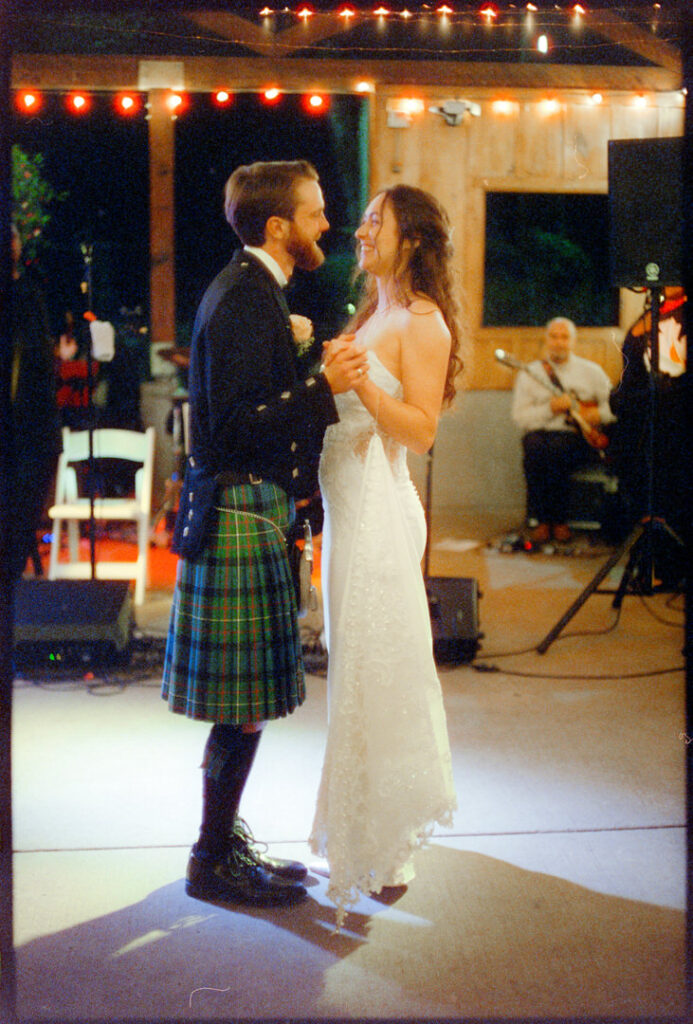
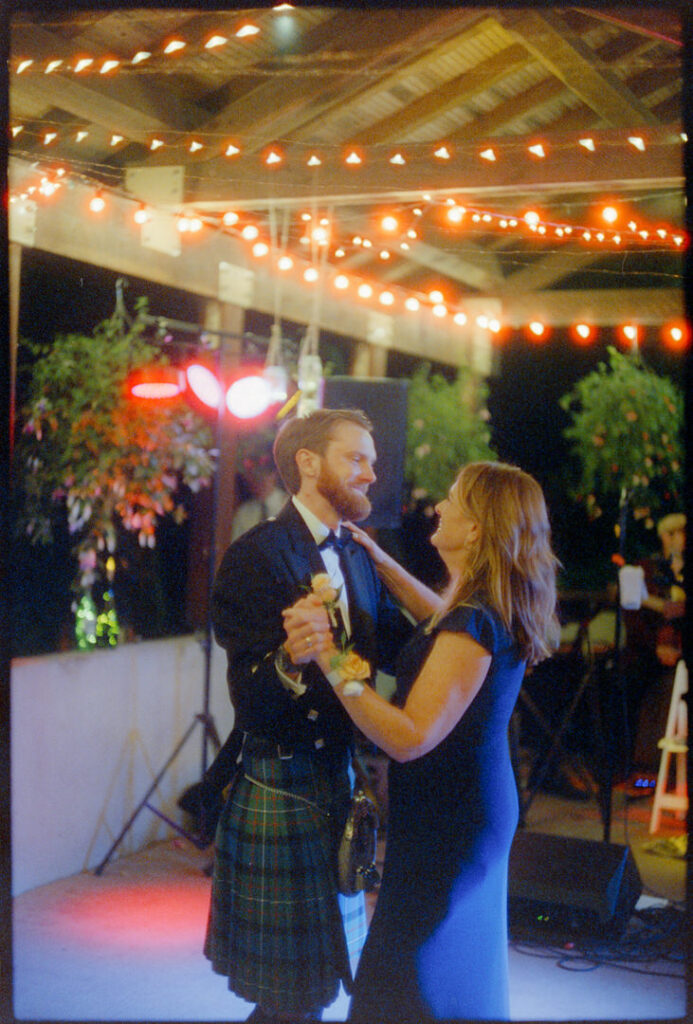
35mm vs 120 film Guide: Black and White Film Stocks
There’s something timeless about black and white film, especially when it’s shot intentionally. Here’s what I offer:
Ilford BW
High contrast with soft, visible grain. I use this stock when I want to emphasize compositional light, and a vintage aesthetic.






Kentmere 400
This one has a softer, greyer tone and delivers more of a romantic vintage look. Both are beautiful, so it just depends on your taste.







Note: I sometimes convert color images to black and white in post if it enhances the story or emotion of the moment. I am all for preserving the feel of the images, so I will only make that decision artistically to select images, if any.
The Beauty of Film Photography on Your Wedding Day
There’s no wrong choice, only what feels right for you. Whether you’re drawn to the artistic softness of medium format cameras or the grainy, nostalgic feel of 35mm, your wedding film experience can reflect exactly who you are.
I bring a wide range of tools and a creative eye to help you create a gallery that feels entirely your own. From the variety of cameras I carry to the colors and textures of each roll of film, everything is chosen with care.
So, if you’re ready to build your own custom film plan or just want to learn more, I’d love to chat. Reach out to me here, or follow along on Instagram and YouTube for behind-the-scenes looks and recent films.
